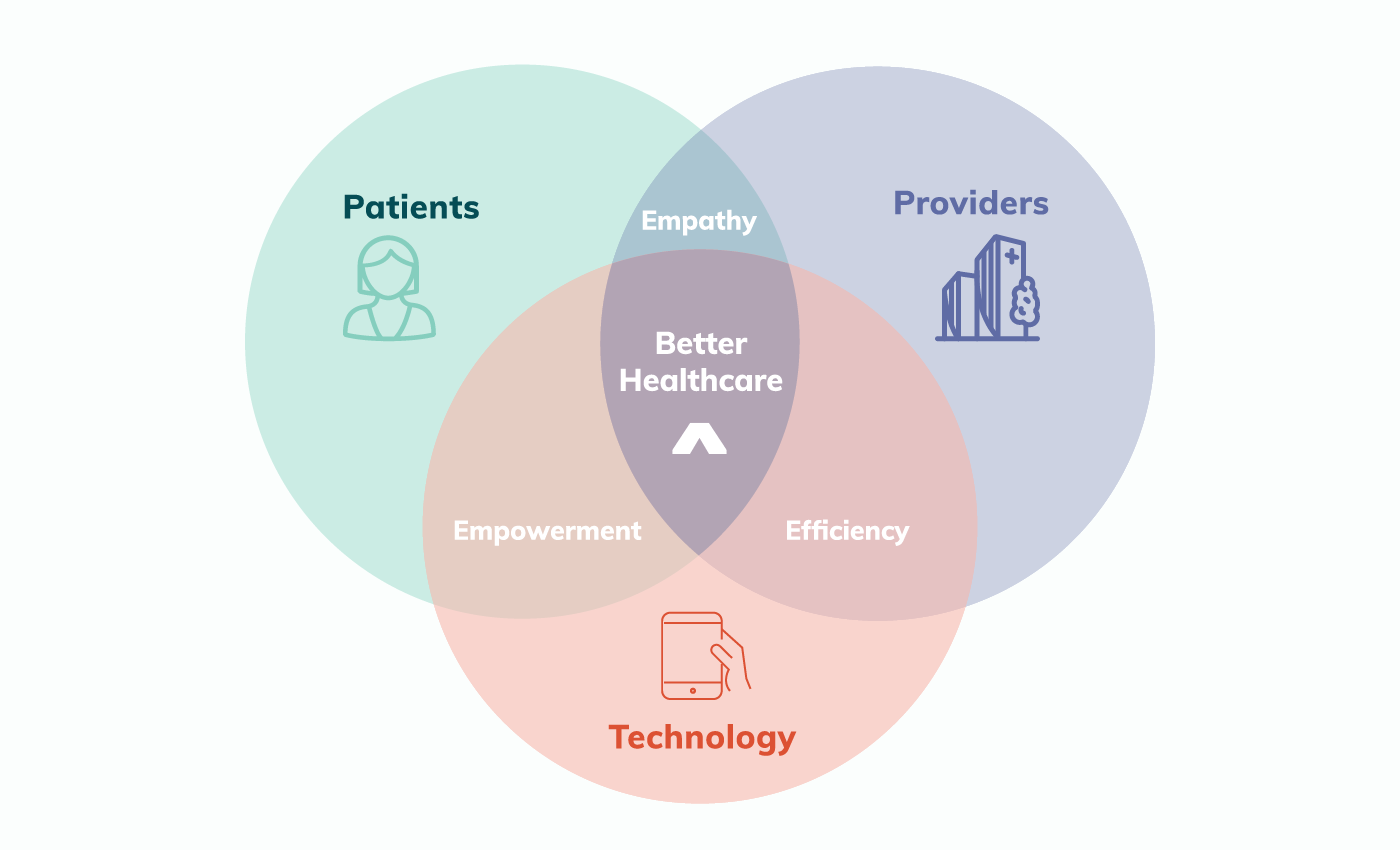Supporting the human connection in healthcare
Feb 07, 2018

There is a moment in the delivery of health care that is almost magical.
I’m referring to the intimate interactions between provider and patient. It’s during that time, however brief, that all the elements of medicine, communication, and human relationships come together in a blend of art and science aimed at finding what’s wrong with the patient and determining what to do about it.
Does health information technology (HIT) help or hurt that moment? The answer to that question usually depends on whom you are talking to. For antagonists, all the bells and whistles of modern health tech at best distract from, and at worst threaten, that crucial interaction. Technologists, on the other hand, see the best of health tech as helping to facilitate the interaction between two human beings by automating (or at least simplifying) rote tasks.
As with most issues, the truth lies somewhere in the middle.
The ideal impact of technology in healthcare
If you imagine a diagram of three circles, two of those would represent the patient and provider. The overlap of those two is where healthcare happens, where one human who’s in an empathetic position to help can listen and respond to another who needs it. The third circle is technology, which has the power to help providers perform better and give patients the tools they need to be active participants in managing their health.

The intersection of all three is the sweet spot where HIT can enable patients to be more engaged and providers to be more attuned, thus strengthening the patient-provider relationship and resulting in better healthcare.
The status quo of technology in healthcare

But what’s happening in many instances is that the interaction between the technology and the care provider is delivering inefficiency. Instead of an empathetic relationship supported by technology, the relationship is often commoditized, largely due to the pressures on providers to increase throughput while utilizing mandated software.
The intersection of art and science
There is a tremendous amount of art involved in healthcare. Obviously, the science has to be there, but if you talk to physicians who have been doing it for a long time, they’ll tell you so much of it is looking into a patient’s eyes and seeing that something is wrong, hearing that a patient’s answers aren’t telling the whole story, or simply having a feeling that though everything appears fine, something else might be at play.
Providers focus on correctly diagnosing a problem and deciding what to do about it. Both of those activities are influenced by how they interact with the patient. Unfortunately, technology in its current state often gets in the way of or complicates that interaction. In many exam rooms, for example, the provider is working on a computer that is up against the wall while the patient is on the other side, creating an environment where instead of giving his or her full attention to the patient, the provider is going back and forth on a swivel chair. Even in a simple situation like that, the technology is a clear barrier to good interaction.
We believe that technology should never try to replace any part of the patient-provider interaction; its role should be to support that interaction, not dominate it. The focus of technology should be on the non-human portion of practicing medicine, where working faster doesn’t detract from the empathy of the interaction.
In that role is where we can expect to see efficiency gains happen. When we create software, we are seeking to fight inefficiency and to create or invigorate the patient-provider relationship. Those areas are the battle cry for technologists.
The patient empowerment gap
Consumer health applications on the market today are at the far end of the adoption spectrum. They are for the athletes and quantified selfies more than the at-risk and chronically ill. The dream of the “digital therapeutic” is still a way off from the mainstream.
The creation of effective consumer-facing healthcare applications is hindered by the inability to tap into clinical data holed up in healthcare delivery organizations. When we talk with product developers entering our industry, many believe there’s a universal way for patients to authorize access to their data. It’s sad that without a BAA, we can’t give them the data.
When asked, many incumbents argue that patients don’t want their data, that they won’t know what to do with it. There may be some truth to this, however, it’s important to note that it’s not the data that’s directly demanded—more so, it’s the ways to interact with that data that’s truly in demand. The applications built on top of these data will deliver the context necessary to glean insight and ultimately empower patients to be engaged in their care, but first, these applications would need access to data no matter where it’s stored and no matter what format it’s stored in.
This requires an interoperable network with density such that a patient can reasonably assume that he or she is covered—and it's precisely what we’re working on it.
Redox: The underlying infrastructure

At Redox, we see ourselves laying the groundwork for these types of solutions. We’re that area in the technology bubble at the bottom, below the direct impact on patients and providers.
But it’s the solutions we power that motivate us to built this network. They're why we get up everyday to work on this problem. This is our purpose.
Are you enthusiastic about bringing empathy, empowerment, and efficiency to healthcare? Apply to work at Redox!
